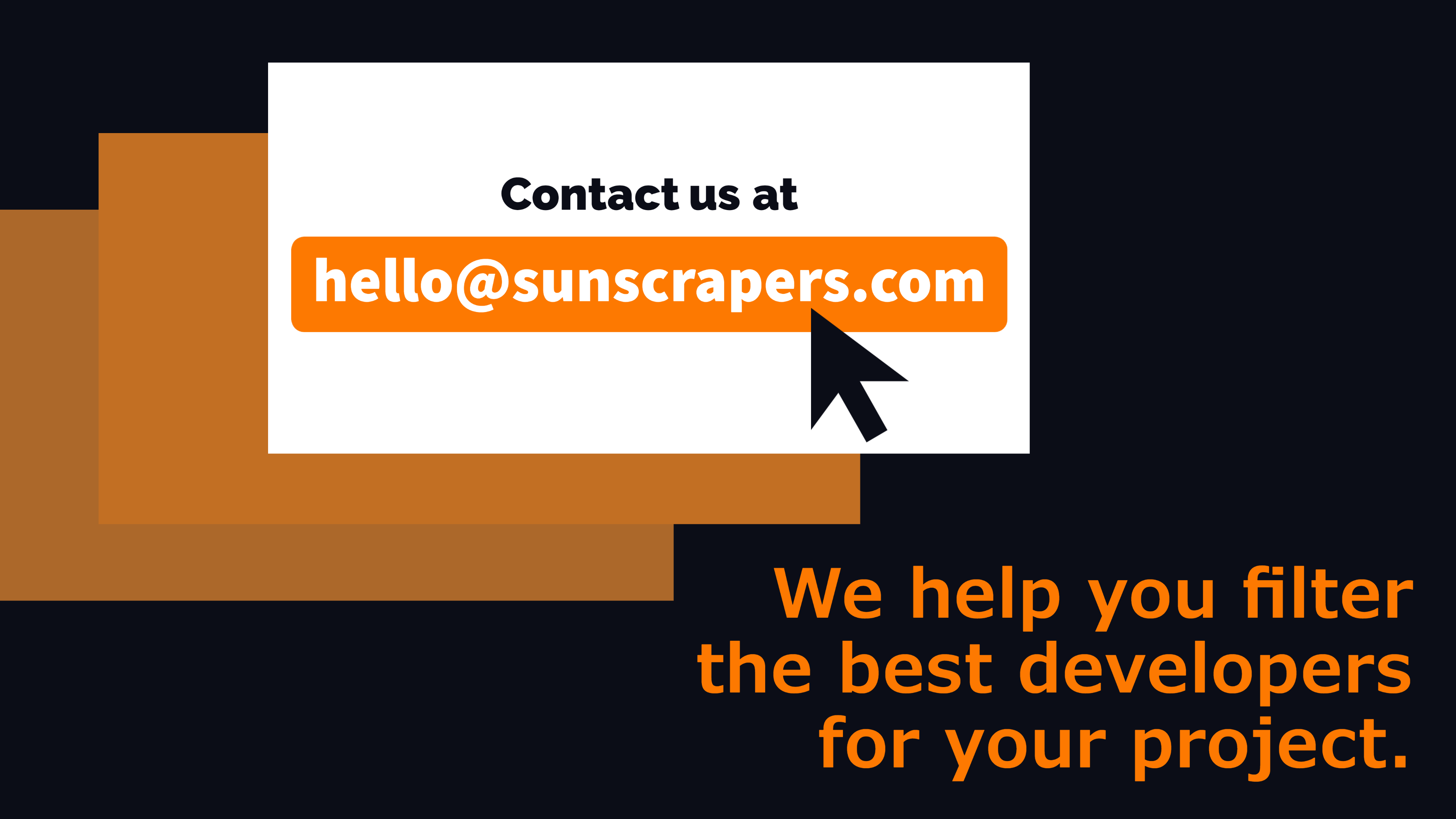
Sunscrapers Team
30 January 2023, 6 min read

What's inside
- Intro
- Django characteristics
- Django for mobile applications
- Django without database
- Django vs Apache
- Summary
- Read more
Intro
I seriously doubt that there is a single person involved in the tech industry who hasn't heard about the Django framework. It’s one of the most popular frameworks for a well-known programming language - Python.
In this article, we will look at the pros and cons of using it for web development, see if it’s suitable for creating mobile apps, how you can run Django without a database, and some information about Django web servers compared to Apache.
Django characteristics
As you probably know, a web framework is a set of tools and modules that eventually help speed up the development process, as many things already exist in a framework out of the box.
Django is no exception to this rule - it’s a full-stack web development framework for engineers working in Python (check: 10 Best Python Web Frameworks.
It’s merely 15 years old and offers a comprehensive set of tools like data validation, caching, logging, pagination, authentication and authorization, or static file management.
It follows the DRY (Don’t repeat yourself) concept and is used by many well-known companies like Spotify, Netflix, PayPal, and Instagram. You can read more about Companies and apps that use Python/Django.
Pros of using Django
So let’s just quickly look at the pros of using Django in projects:
- Speed and scalability
This framework was created to be able to build applications fast without the need to focus on many manual steps you’d have to take otherwise.
- Documentation
Django is extremely well documented. Some say it’s one of the best-documented open-source frameworks. The creators have even gone the extra mile and created a very useful guide to the documentation itself.
- Community
Since Django is very popular, the community supporting it is very big. It’s easy to find solutions to any problems you may encounter - which speeds up the delivery time.
- Security
Django, as a framework, has a lot of security features built in. It has a user-authentication system that protects from Clickjacking, XSS, CSRF, or SQL injection attacks. It naturally supports HTTPS. This means you do not have to spend time implementing security measures manually, as they come out of the box.
- Versatility
Django is extremely versatile, allowing you to build virtually any type of system. It can also handle machine learning and big data analysis as well.
Cons of using Django
We also should point out that there are some downsides to using Django, and among them, you can find:
- Complexity
As Django is a pretty complex framework it’s not really suitable for small applications. In that case, we suggest using Flask (check Django vs Flask: Which one should you choose for your project?)
- Speed
Speed is an upside of Django, but can also be a downside. How? Since it’s really complex and allows you to grow the application easily you have to be extra careful while adding more and more resources that are accessible by the app (like databases). But it’s relatively easy to mitigate, with the vast documentation and community support.
- Size of Django
As mentioned before - Django is huge. That’s why you need to be careful when planning the app architecture.

Django for mobile applications
So now that we quickly covered the basics let’s take a look if Django is a proper framework for mobile applications.
Django has all the necessary tools to handle both the backend and frontend but in the case of mobile apps we would simply suggest using Django for the backend part and for the frontend it's a good idea to expose the API to an additional frontend solution. And in this aspect, there is total freedom of choice.
Most popular would be React Native. They make a really good combination and there is actually one company that does it and you may have heard about it - Instagram.
When using Django Rest Framework you can also work with Flutter to create the mobile application.
Another choice you may be interested in is Ionic. Django can totally support the backend side of the Ionic application, but in this case you will not be able to use its templates, but it’s not a problem. You can still get all the data needed using HTTP requests.
Django without database
Now we know a bit more about using Django in mobile applications (and it’s clear that it may be a very good choice), let’s see if Django can work well without a database.
Sometimes you may want to create a Django application that simply will not have any database. And it’s important to remember that by default Django is dependent on the database, but it turns out that it’s not required - you can simply set the REST framework configuration of UNAUTHENTICATED_USER to NONE and it would do the trick. But you must bear in mind, that is not the default behaviour of Django and in the case of using Django without a database we would rather suggest finding a better alternative.
Django vs Apache
There are some questions about how Django interacts with Apache. First of all, they are two different things.
Django is a server-side framework that is written in Python. Being one, it needs a web-server application that would actually run the code written in Django. There are many web-server applications out there, and Apache is actually one of them.
Summary
Django is a very versatile framework that allows the creation of many different web and mobile applications. If you want to read more about companies that are using this technology you can check our blog post about it.
If you need any type of consultancy or implementation of Django project you can contact us at hello@sunscrapers.com and we will do everything we can to help you make the right choice.
Read more
- Sunscrapers Guide to the Django REST Framework
01 Build a functional REST API with the Django REST Framework
02 Avoid issues like spaghetti code or antipatterns
03 Improve your Django skills
Download it here.
- 10 Django packages you should know
- What is Python used for? Key benefits and examples across 3 industries
Articles mentioned in the post


